Fruit and Vegetables in Year 1
Today we became fruit and veg detectives! The children explored juicy strawberries and crunchy carrots, using their senses to investigate how they look, feel and taste. There were lots of surprised faces and thoughtful comments as they compared the sweet and earthy flavours.


Austin “The strawberry has seeds on the outside.”
Jolyon “The strawberries grow from the flower.”
George “The carrot is crunchy!”
Gracie “The carrot is the root.”
Alfie “We can eat ALL of a plant!”
Olivia “The carrot is tough and rough”
Spirituality
It wasn’t just about tasting — we also took time to pause and admire the beauty of nature. From the tiny seeds on a strawberry to the bright orange of a carrot, the children were filled with awe and wonder. A deliciously fun and thoughtful afternoon of learning! 🍓🥕
Reading – Rosie Revere, Engineer
This week, we’ve been exploring the imaginative world of Rosie Revere, Engineer by Andrea Beaty. This book links to our topic this half term – D&T.

The story of Rosie, a young girl who dreams of becoming a great engineer, has sparked curiosity in our classroom, leading to some brilliant questions.
We’ve discussed perseverance and the importance of learning from mistakes. The children were inspired by Rosie’s resilience and her ability to reflect on her failures. Her ability to evaluate demonstrates an important part of the design process.
The children enjoyed embodying Rosie Revere and writing a note to her Aunt using lots of fabulous adjectives.
Rosie Revere, Engineer has taught us that with a bit of imagination and a lot of perseverance, anything is possible! Mistakes help us to learn and grow!
Help at home by asking your child about a time when they’ve had to persevere after an initial failure. What did they learn from not giving up?
Enjoy the story at home here.
Top tip for watching YouTube with your child: go to the settings cog (it’s along the play bar) and turn off autoplay – this avoids an inappropriate clip coming up automatically, and helps to discourage your child from passively watching clip after clip.
Spooky stories …
This week we’ve started getting ready for our next piece of writing … the start of a spooky story!
Today we’ve been hunting for words, phrases and sentences that we could use in our spooky writing.

We’ll collate our best ideas to use as a reference when we do our own writing to help us use ambitious vocabulary.
We look forward to sharing our spooky stories with you in a couple of weeks. If you’d like to help your child at home, you could share a spooky story together. There are a list of recommended spooky stories for Key Stage 2 here: https://www.booksfortopics.com/booklists/topics/literacy-reading/horror-spooky-stories-for-ks2/
Year 6 Residential – Day 2
We’ve had another fantastic day at Robinwood. The rain didn’t hamper our day of exciting activities.
First, we braved the elements to tackle Night Line, a blindfolded obstacle course. The children impressed me with their teamwork and communication.
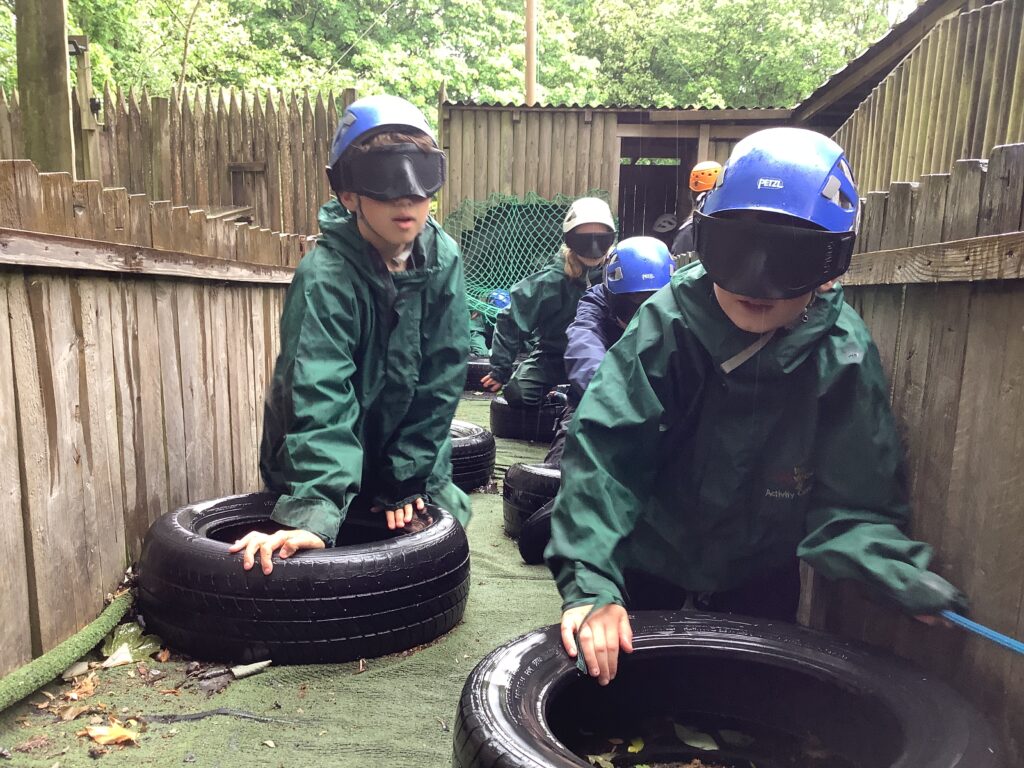
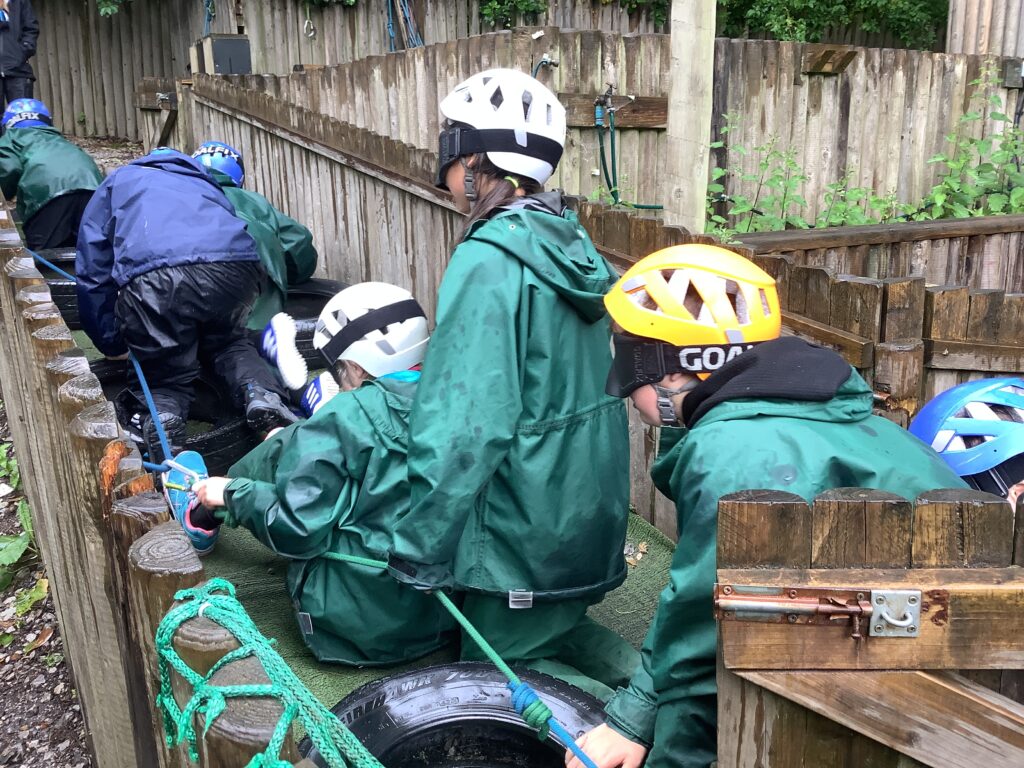
Next, we took on the Piranha Pool – an escape room with some challenging puzzles and a watery twist. The children navigated the obstacles skilfully and escaped the room before the piranhas were released!
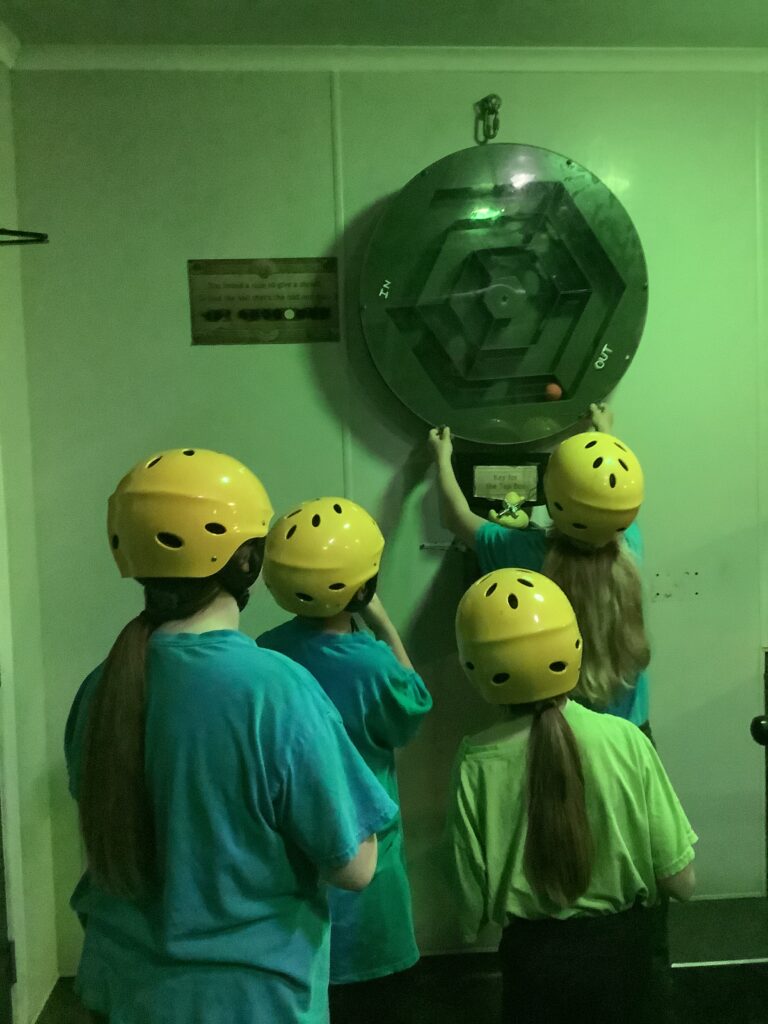
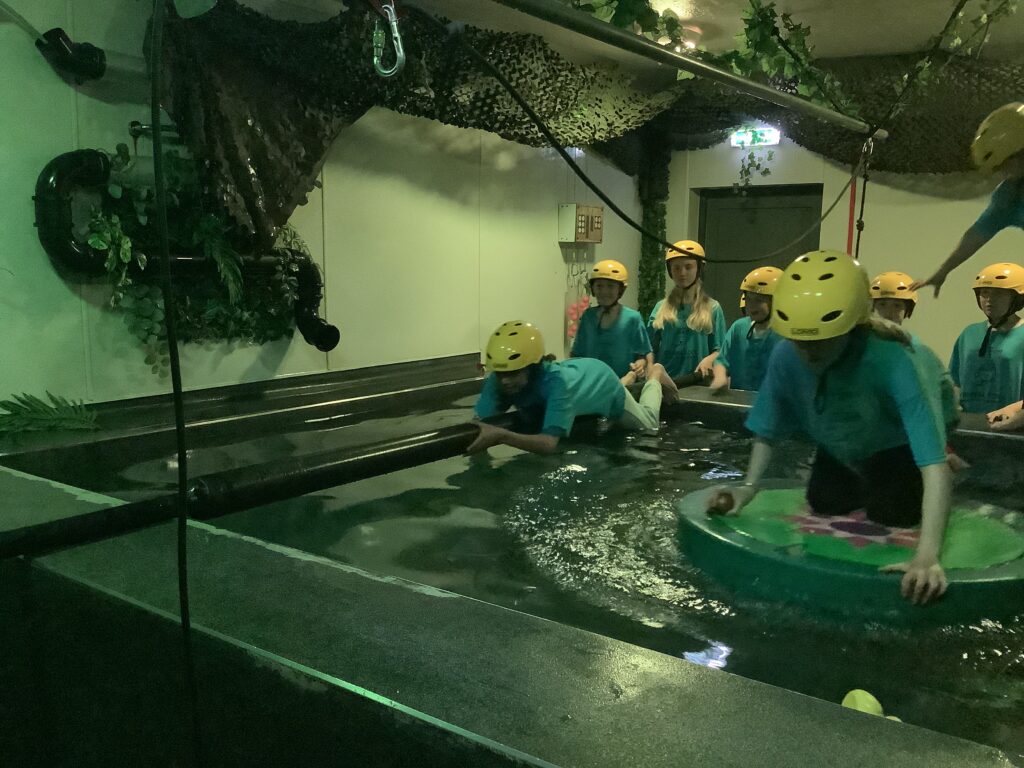
Our busy morning of teamwork continued with the Knight’s Quest – a puzzle to prove worthiness of being a knight of the realm.
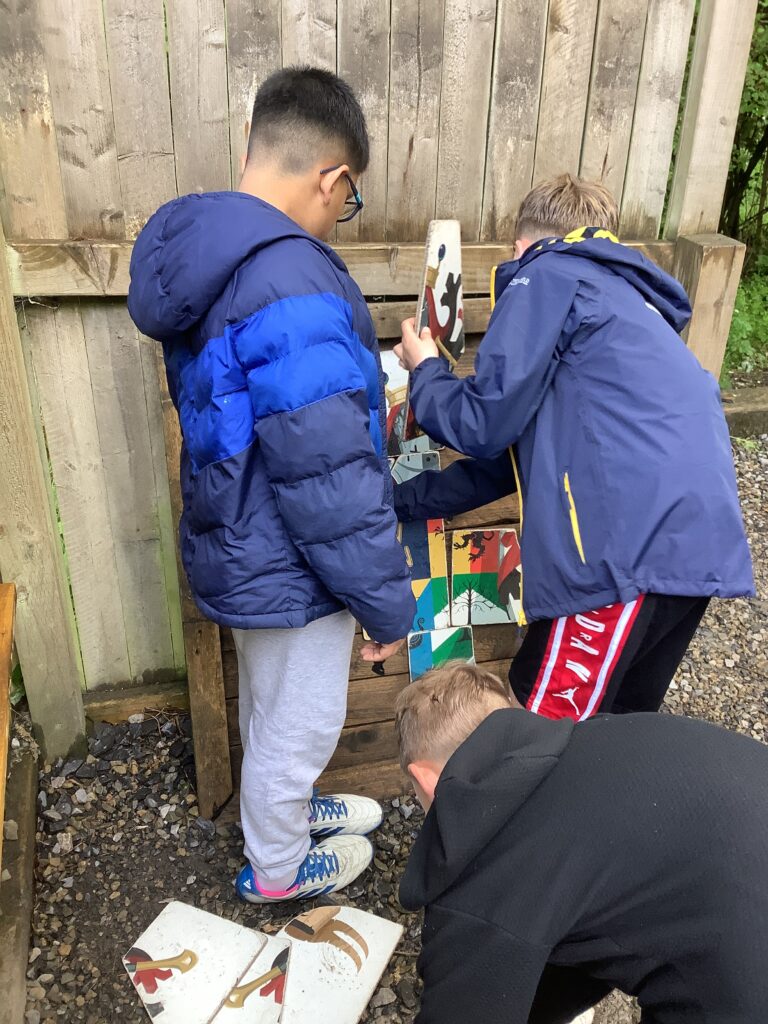
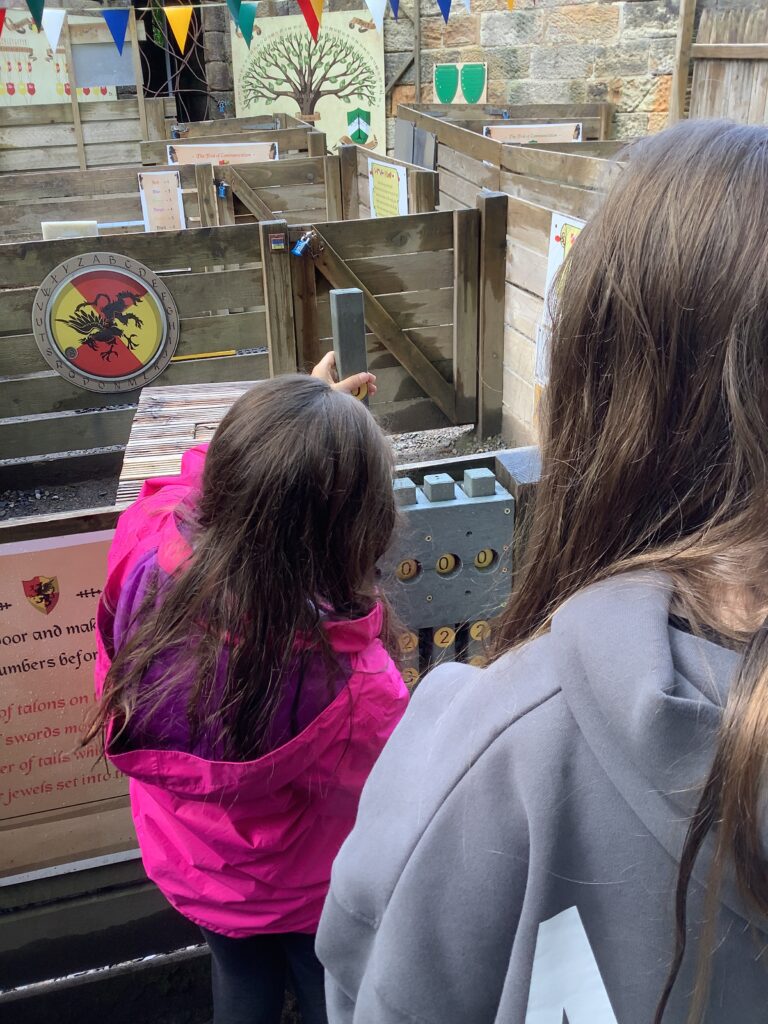
After lunch, it was the eagerly anticipated zip wire. We had a blast!
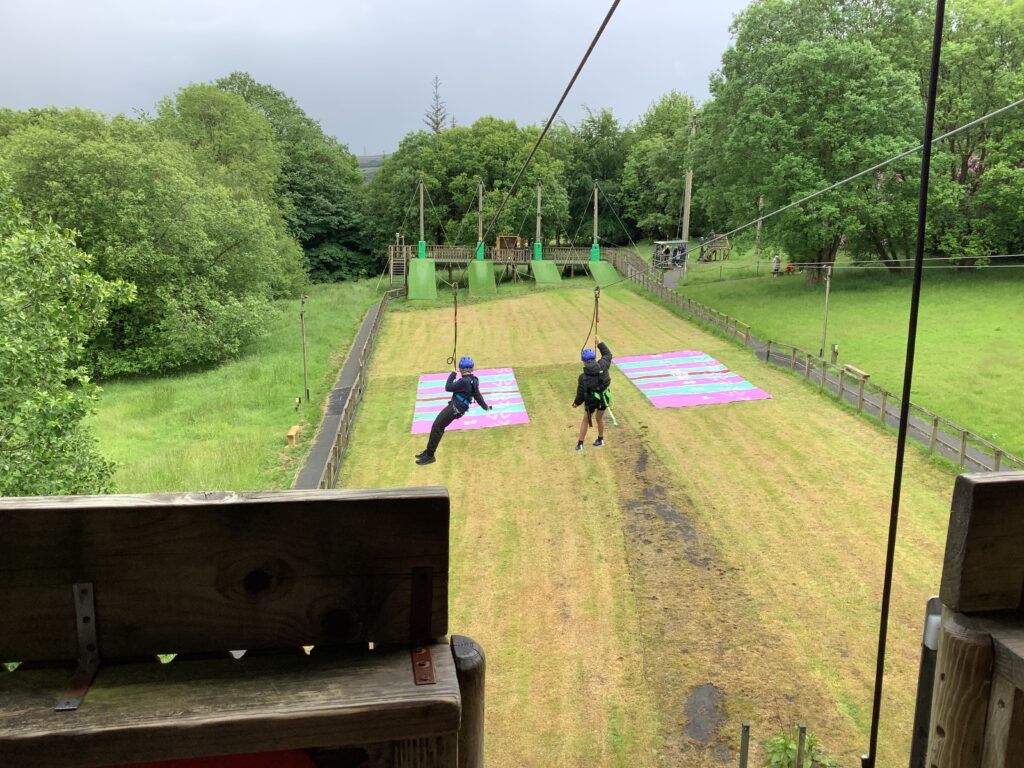
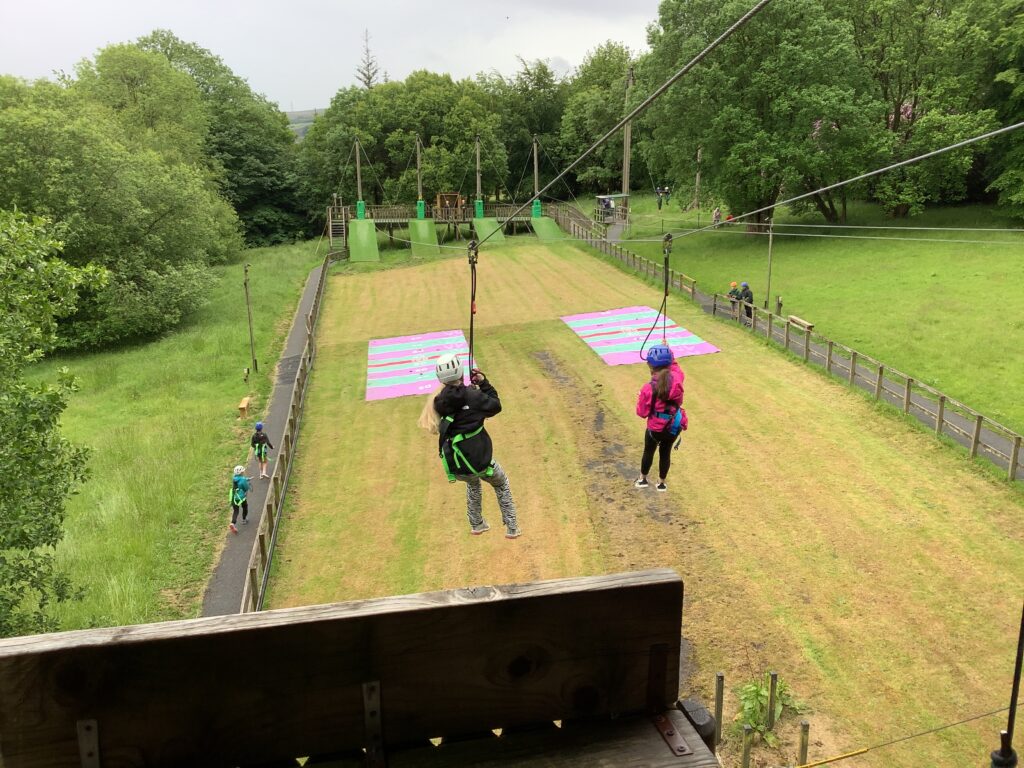
Our busy day continued on the climbing wall. The children embraced the challenge enthusiastically and demonstrated some impressive skills.
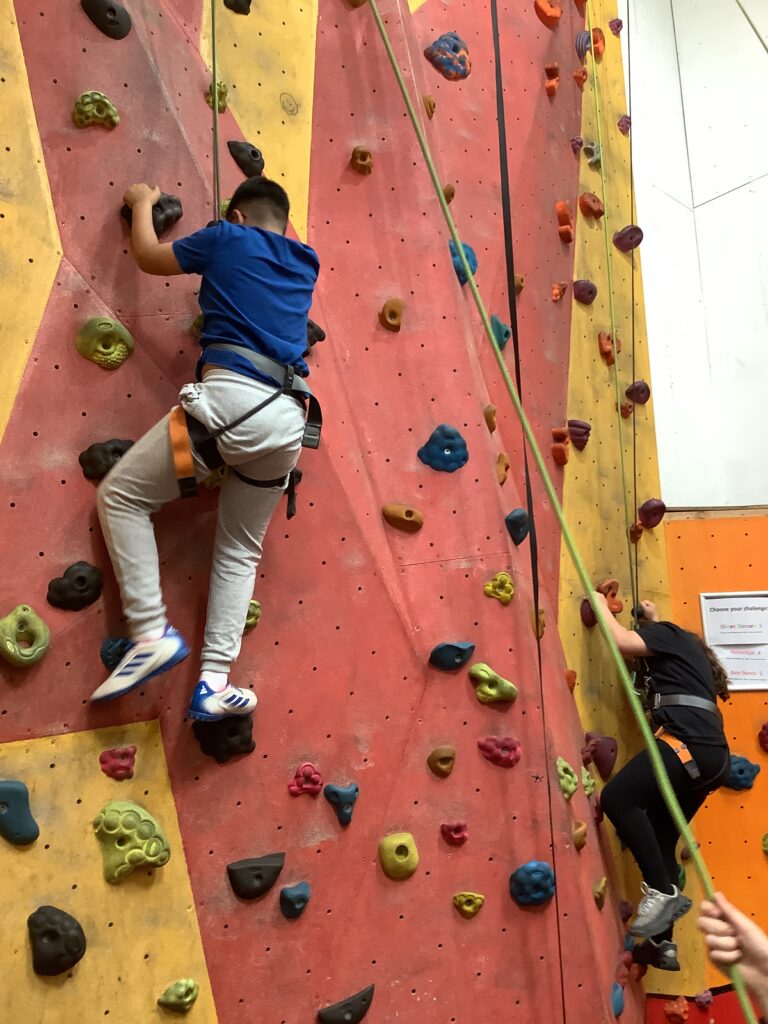

We rounded off the day with the knee-trembling trapeze. This pushed the children out of their comfort zone. They overcame fears and cheered each other on – I was so impressed by the support they showed one another!
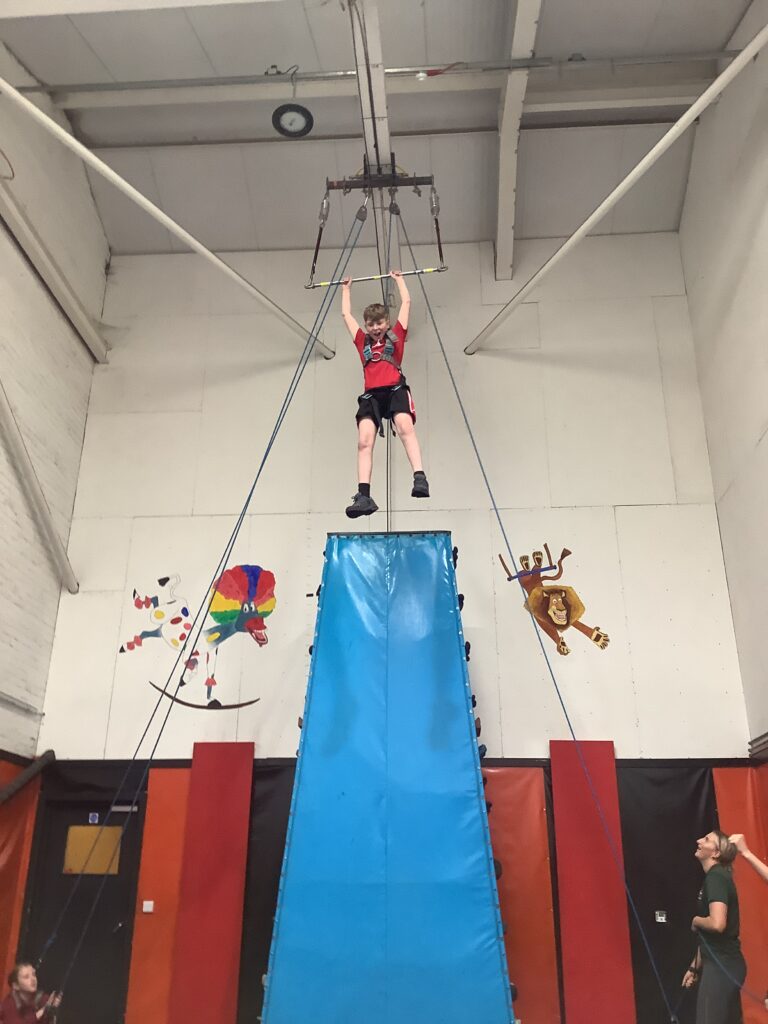

Fire safety visit
This week, Year 5 had a visit from firefighters from Wetherby Fire Station. We were taught about what the firefighters do and the various jobs they are called to.
We learnt about prevention and the steps we can take to ensure that we reduce the risks of a fire breaking out in our homes – this includes not leaving devices with lithium-ion batteries plugged in.
Ensuring we have a bedtime routine is important too – ensuring ovens are off, devices unplugged, stairs clear and doors shut. The children were encouraged to speak to parents about an escape route should a fire break out, like what we do here at school.



The over-riding message from the visit was: GET OUT, STAY OUT, CALL 999.
Help at home – Ask your child:
- What jobs do the firefighters do?
- What are some of the common causes of fires in the home?
- How often should we check fire alarms at home?
- How many smoke alarms should we have in our homes?
- Which devices have lithium-ion batteries?
- What should you do if there is a fire in your home?
Year 6 Residential – Day 1
Year 6 have a had a fantastic first day at Robinwood! After a delicious lunch, the activities were under way – starting in the Dungeon…
The children had to work together to solve problems and escape the room.
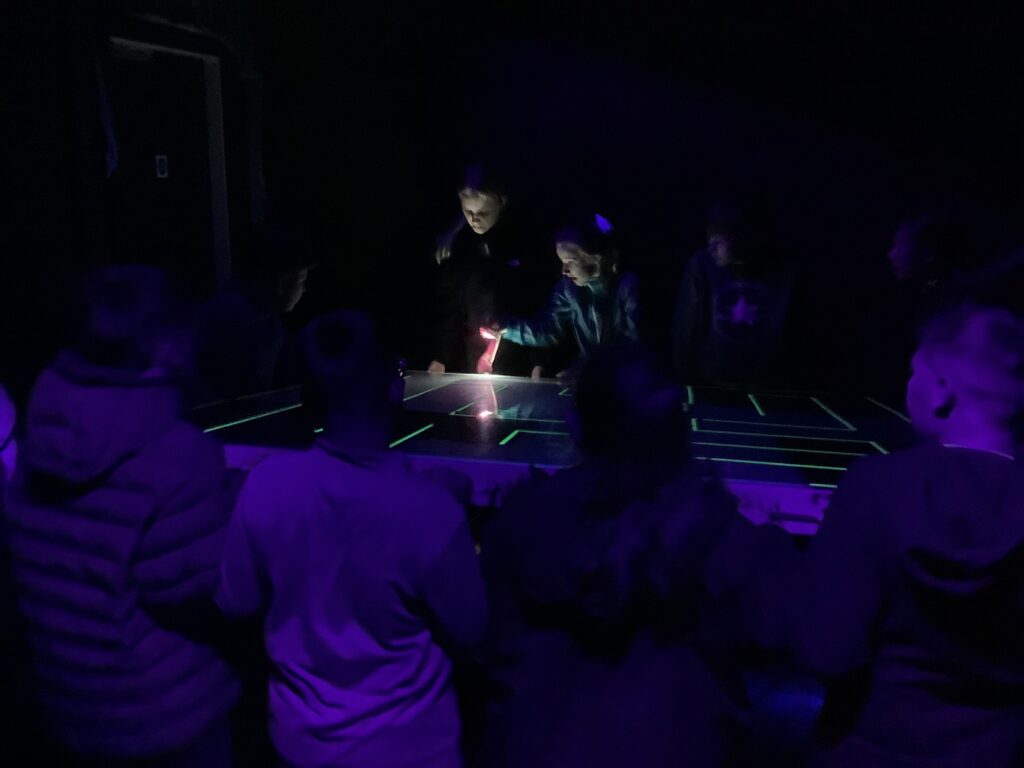
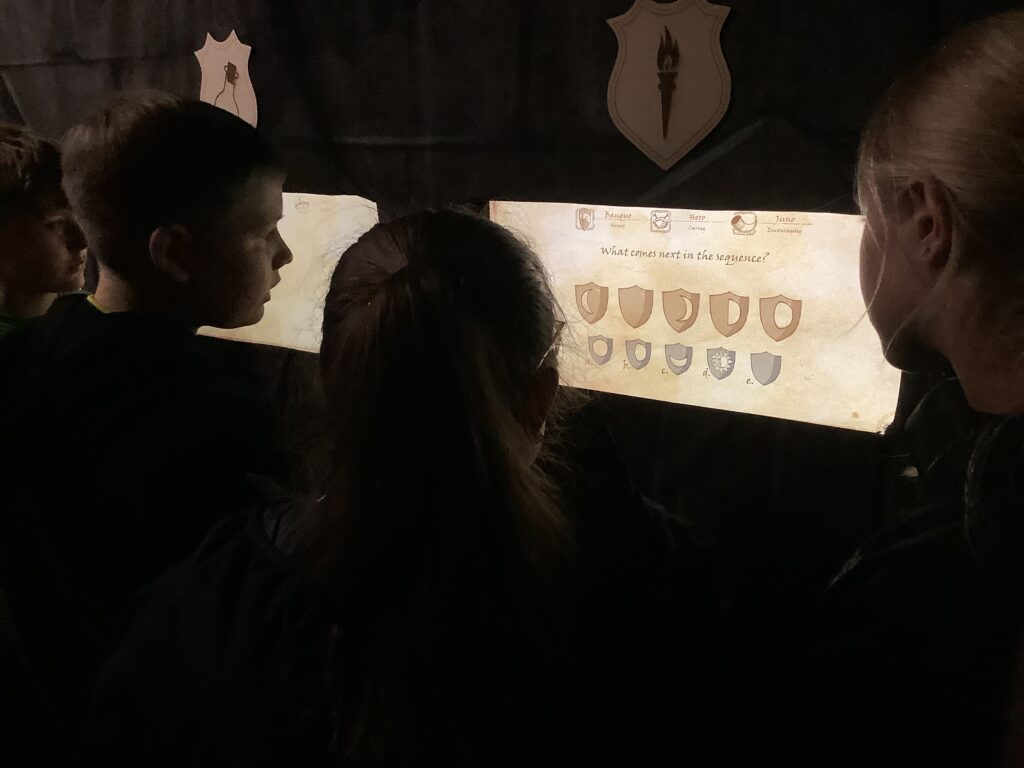
Then, it was over to archery. The children really impressed me with their progress!
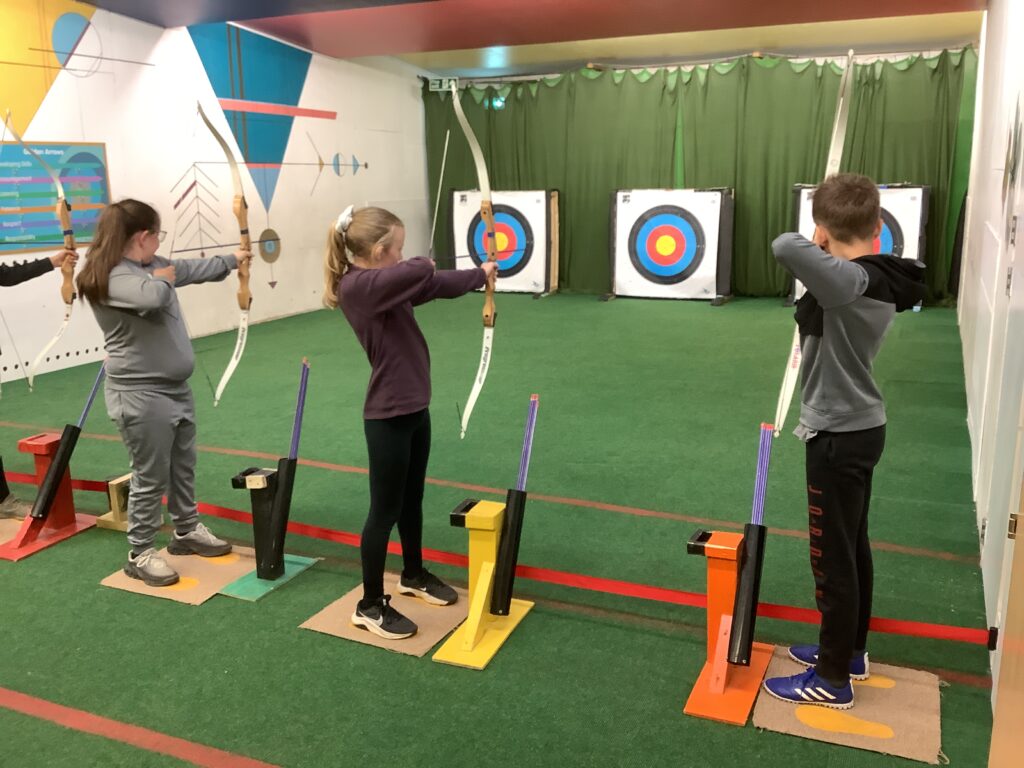
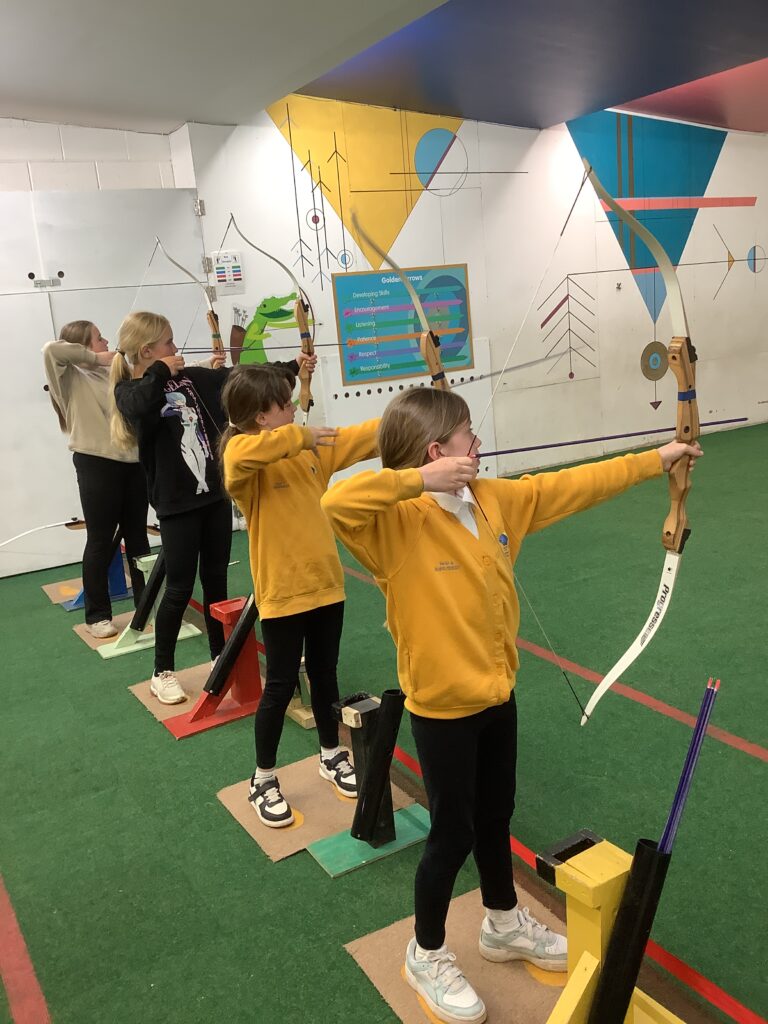
The giant swing had some of us facing our fears. A few children showed some real courage and felt proud of their achievement.
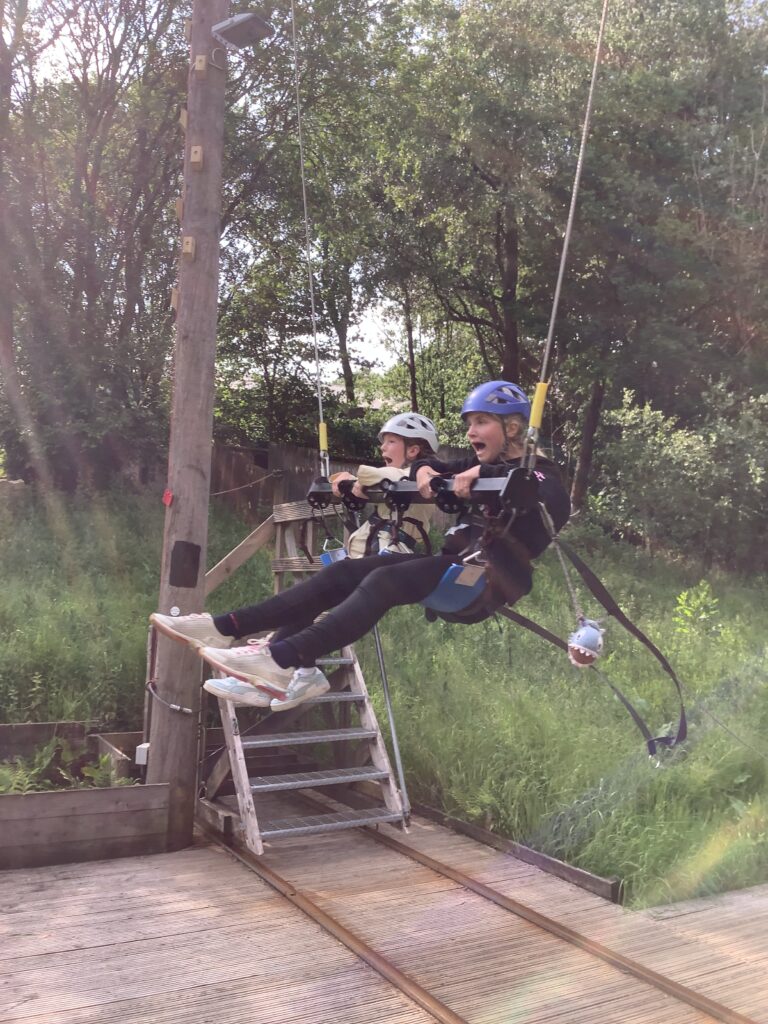
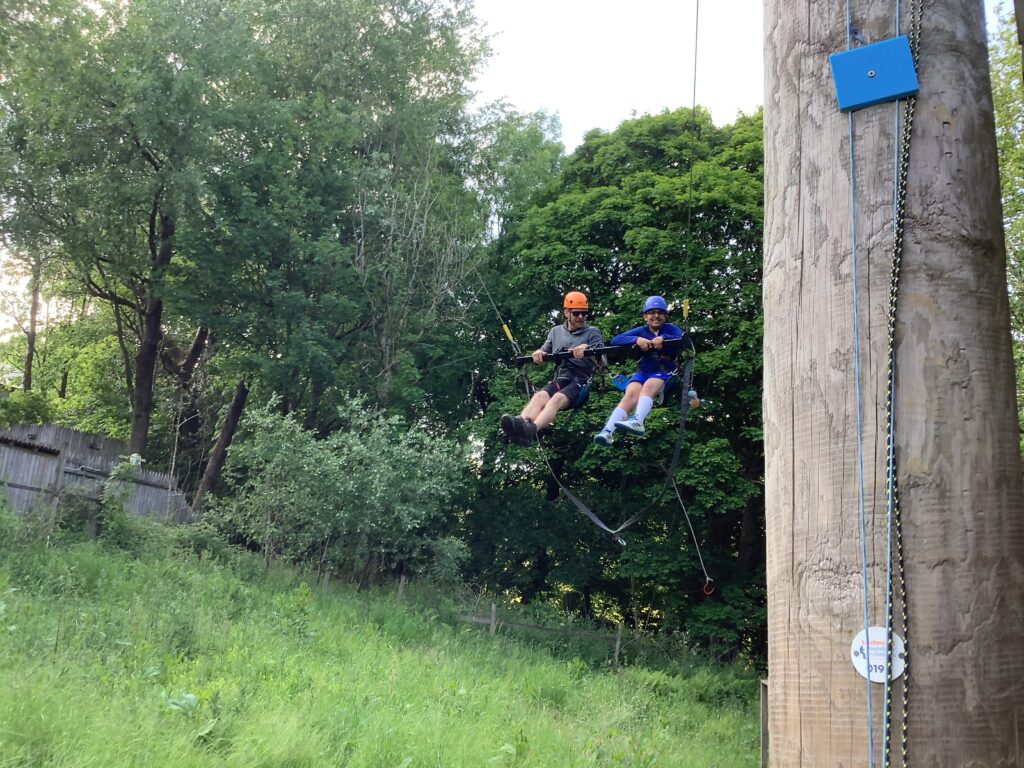
After our evening meal, we enjoyed the crate challenge.
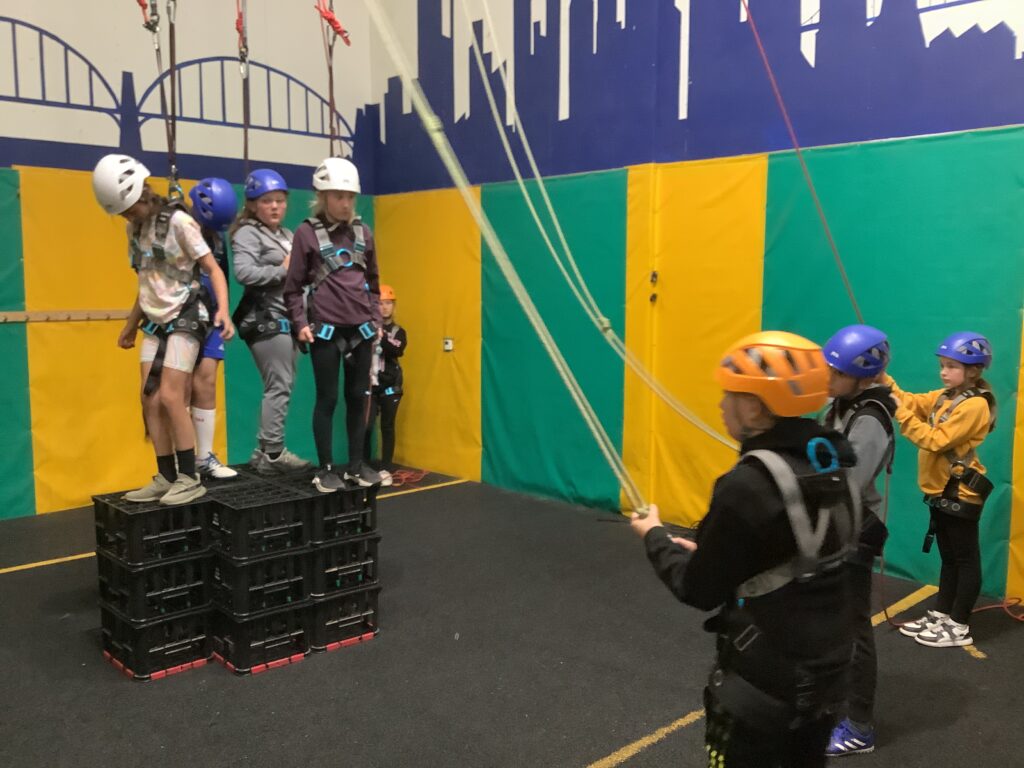

WOW and NOW
In Year 5 and 6, we often pause our learning for moments of reflection. We often get spiritual, recognising a sense of connection or a sense of awe and wonder – these moments have happened throughout the year and your child will be able to talk to you about some of these moments.
Often, though, some moments are unplanned and we refer to these moments as WOW, OW and NOW moments. Simply put:

Yesterday, we had an unexpected visitor to our classroom when a beautiful chiffchaff flew in. We saw this as both a WOW and a NOW moment. The children we very calm to ensure the bird did not become too frightened. We eventually set the bird free with the help of Freddie’s hoodie.

Help at home – are there moments where you think WOW? Share WOW, OW and NOW moments together. Talk about how these moments make you feel. Share them back at school.
Spooky Settings!
In writing, Year 3 are tasked with a spooky setting description. The purpose of this is to use skills, such as expanded noun phrases and rich vocabulary, for descriptive purposes. So far this week, we (the reader) have put ourselves in the shoes of an illustrator. To begin, our canvas is blank. When reading a good example of a setting description, our canvas begins to fill with everything the writer wants us to see, hear, feel, touch, smell and so on. By the end of the paragraph, we have a full idea of what the setting would be like.
Next, we had a go at writing a short class setting based on the picture below. Here’s the fantastic piece the children came up with!

In the middle of nowhere, an eerie, abandoned house stood silently like a solitary statue. The grass seemed to have a blanket of ash resting on top. Cautiously stepping closer, I heard creaky floorboards. An army of goosebumps invaded my arms.
Help at home:
Explore your child’s current reading book with them and pick out some rich vocabulary that may suit a spooky setting description! We will share these ideas in our lessons and add them to our word wall.
Class novel – Rosie Revere, Engineer
The children have had a great week so far and have enjoyed reading our new class novel Rosie Revere, Engineer by Andrea Beaty. (This is a YouTube link. Top tip for watching YouTube with your child: go to the settings cog along the play bar and turn off autoplay – this avoids an inappropriate clip coming up automatically, and helps to discourage your child from passively watching clip after clip.) It’s all about a young girl who dreams of becoming an engineer and learns that failure is just part of the journey to success.
It ties in perfectly with our Design and Technology topic for this half term, where we’ll be encouraging the children to be creative, try out ideas and not give up when things don’t go to plan.
We’ve also talked about how the book links to our Christian value of courage – believing in yourself, having a go and chasing your dreams, just like Rosie does.
Home Learning – Be an Inventor!
Design and build your own invention using recycling materials—like boxes, tubes or bottle tops. It could be a flying machine, a robot or something to help people!
Bring in a photo or drawing to share. Remember, just like Rosie, it’s all about being creative and having the courage to try!
Summer 2
Our final theme for this year is Seaside and Cities, our first focus book this week is The Night Pirates.

This week we will be Geographers and will be looking at where we all live in England, we will also identify where we would find seaside towns on a map of the UK. Our word of the week is Country we live in the country England.
Help at home: talk to your child about where they live can they say their full address?